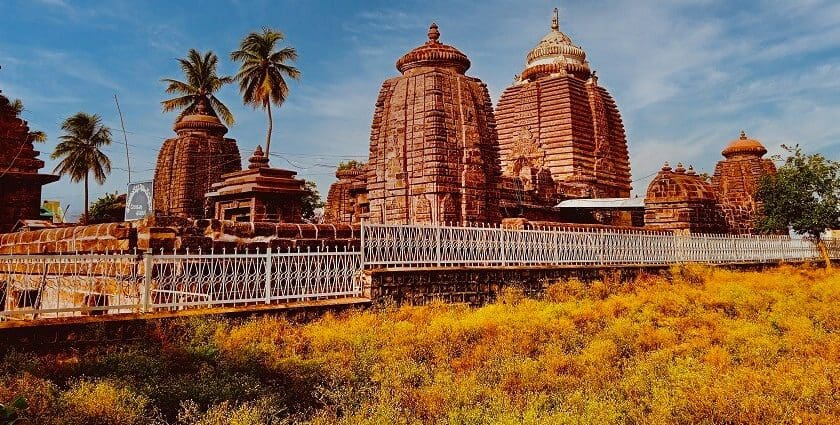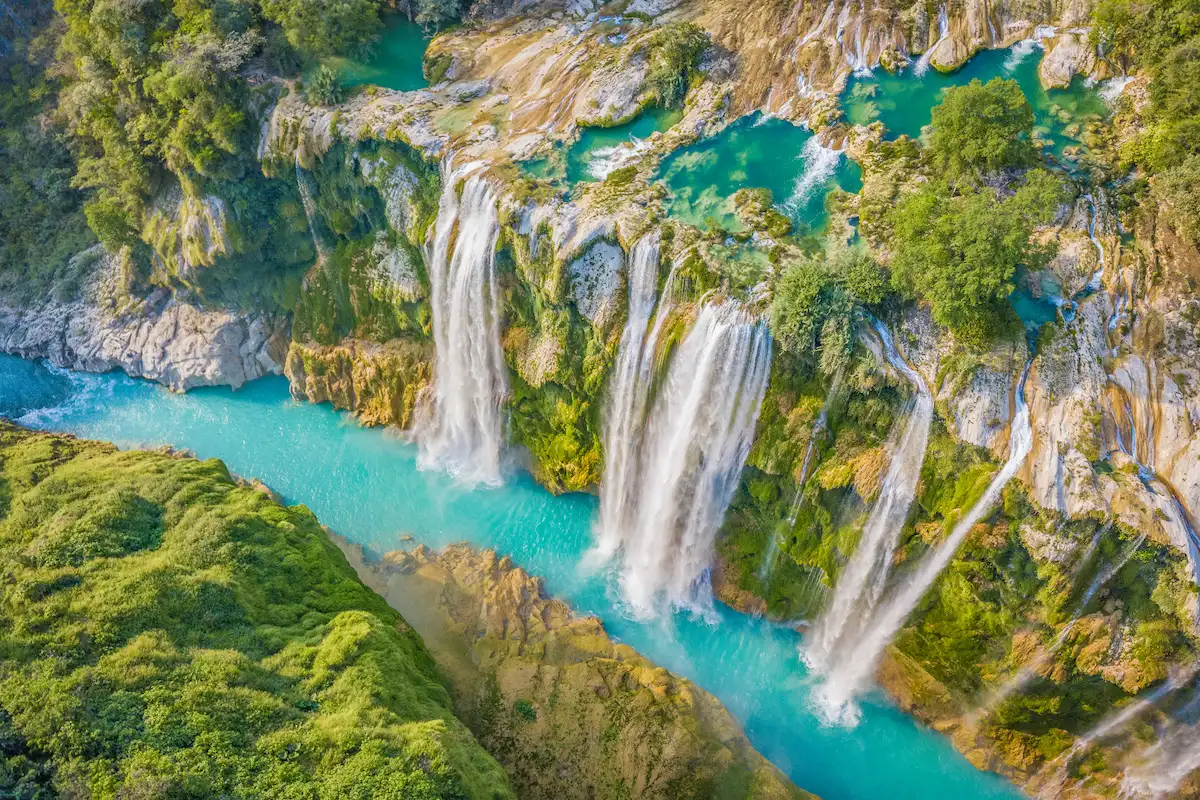Kurnool, a city steeped in history and natural beauty, often flies under the radar for many travelers. However, those who take the time to explore this hidden gem in Andhra Pradesh are rewarded with unforgettable experiences. From ancient temples to breathtaking landscapes, Kurnool offers a diverse array of attractions that beckon visitors to return. In this article, we’ll uncover 8 Places To Kindle Your Interest To Revisit Kurnool that will ignite your curiosity and leave you yearning to revisit.
Why Kurnool Deserves a Second Visit
Kurnool is more than just a stopover on your journey through Andhra Pradesh—it’s a destination rich in culture, heritage, and natural wonders. Whether you’re a history enthusiast, an adventure seeker, or someone who simply enjoys soaking in serene surroundings, Kurnool has something for everyone. Its unique blend of historical landmarks, spiritual sites, and scenic spots makes it a place worth exploring multiple times.
The city’s strategic location along the banks of the Tungabhadra River adds to its charm, offering a perfect mix of tranquility and vibrancy. As you delve deeper into Kurnool’s offerings, you’ll find yourself drawn back again and again, eager to uncover new layers of its multifaceted personality.
Place #1: Belum Caves – A Subterranean Marvel
Exploring the Depths of Nature
Belum Caves, located near Kurnool, are one of the longest cave systems in India and a must-visit for anyone intrigued by geological wonders. Stretching over 3.5 kilometers, these limestone caves feature stunning stalactite and stalagmite formations, underground streams, and chambers that evoke a sense of awe. The caves have been formed over millions of years due to the erosive action of water, creating intricate patterns and shapes that seem almost otherworldly.
Highlights of Belum Caves
- Saptasvarala Guha : A natural musical chamber where the acoustics create melodious echoes. This section of the cave is particularly popular among visitors who enjoy clapping or singing to hear their voices reverberate.
- Thousand Hoods : A mesmerizing section filled with rock formations resembling snake hoods. These formations are illuminated with soft lighting, enhancing their eerie yet beautiful appearance.
- Meditation Hall : A serene spot perfect for introspection and relaxation. The quiet ambiance and dim lighting make it an ideal place to pause and reflect during your exploration.
The caves are well-lit and equipped with walkways, making them accessible even for casual visitors. For adventurers, guided tours offer deeper insights into the caves’ history and formation process. Additionally, the cool temperature inside provides a refreshing escape from the heat outside.
Why You’ll Want to Return
Every visit to Belum Caves reveals new details—whether it’s discovering a hidden nook or marveling at the interplay of light and shadows within the caverns. The sheer scale and mystery of the caves ensure that each trip feels like a fresh adventure. Moreover, seasonal changes can affect the flow of underground streams, altering the experience slightly with every visit.
Place #2: Srisailam Temple – A Spiritual Haven
A Pilgrimage Site Steeped in Devotion
Perched on the banks of the Krishna River, Srisailam Temple is one of the twelve Jyotirlingas dedicated to Lord Shiva. This sacred site attracts pilgrims from across the country, but its architectural grandeur and tranquil ambiance also appeal to non-religious visitors. The temple’s towering gopuram (gateway tower) dominates the skyline, serving as a beacon for devotees and tourists alike.
Key Features of Srisailam Temple
- Intricate Carvings : The temple complex boasts exquisite sculptures depicting Hindu mythology. Scenes from epics like the Ramayana and Mahabharata are intricately carved into stone, showcasing the craftsmanship of ancient artisans.
- Panoramic Views : Situated atop the Nallamala Hills, the temple offers breathtaking vistas of the surrounding landscape. Visitors can enjoy panoramic views of the river below and the dense forests stretching beyond.
- Festivals : Events like Maha Shivaratri draw thousands of devotees, creating a vibrant atmosphere filled with rituals, music, and dance. These festivals provide a glimpse into the cultural richness of the region.
Why You’ll Want to Return
Each festival at Srisailam brings a unique energy and cultural richness. Additionally, the ever-changing hues of the hills during sunrise and sunset make every visit visually distinct. Whether you’re seeking spiritual solace or simply admiring the architecture, Srisailam Temple offers endless reasons to return.
Place #3: Mahanandi Temple – Where Spirituality Meets Nature
A Serene Retreat Amidst Greenery
Mahanandi Temple, nestled amidst lush greenery and rolling hills, is part of the Navanarasimha Temples circuit. Known for its healing waters, the temple’s sacred tank is believed to have medicinal properties due to mineral-rich springs. This combination of spirituality and nature creates a uniquely calming environment.
What Makes Mahanandi Special?
- Sacred Tank : The crystal-clear water reflects the temple’s towering gopuram (tower), creating a picturesque scene. Pilgrims and visitors alike take dips in the tank, believing it to cleanse both body and soul.
- Nature Trails : Surrounding forests provide opportunities for peaceful walks and birdwatching. The area around the temple is home to diverse flora and fauna, making it a haven for nature lovers.
- Cultural Significance : Legends associated with the temple add depth to its spiritual allure. According to folklore, the deity here grants wishes related to health and prosperity.
Why You’ll Want to Return
The calming effect of the temple’s environment, combined with its mythological significance, invites repeated visits. Each season paints the surroundings in different colors, offering varied visual delights. Whether you’re visiting during the monsoon when the hills are lush and green or in winter when the air is crisp and clear, Mahanandi never fails to enchant.
Place #4: Orvakal Rock Garden – Nature’s Artistry
A Geological Wonderland
Orvakal Rock Garden, located about 12 kilometers from Kurnool, is a paradise for nature lovers and photographers. This sprawling park features massive boulders, winding pathways, and serene lakes, all set against a backdrop of rugged terrain. It’s a place where art and nature converge seamlessly.
Attractions Within Orvakal Rock Garden
- Prehistoric Rock Paintings : Ancient artwork discovered here provides a glimpse into early human life. These paintings depict hunting scenes, animals, and daily activities, offering valuable insights into prehistoric cultures.
- Adventure Activities : Options like zip-lining and rappelling cater to thrill-seekers. Adventure enthusiasts can test their limits while enjoying the stunning scenery.
- Picnic Spots : Designated areas allow families to enjoy leisurely afternoons outdoors. Shaded groves and open spaces provide ample room for picnics and games.
Why You’ll Want to Return
The garden’s dynamic landscape changes with the weather, offering fresh perspectives during monsoon rains or sunny days. Adventure enthusiasts will find endless reasons to come back for more adrenaline-pumping activities. Meanwhile, photography buffs will be captivated by the ever-changing play of light and shadow across the rocks.
Place #5: Yaganti Temple – A Testament to Architectural Brilliance
Where History Meets Divinity
Yaganti Temple, situated in the Nallamala Forest range, is renowned for its architectural splendor and intriguing legends. Dedicated to Lord Shiva, the temple is famous for its “growing” Nandi statue, which reportedly increases in size over time. This phenomenon has puzzled scientists and fascinated devotees for centuries.
Unique Aspects of Yaganti Temple
- Natural Cave System : Adjacent caves house ancient inscriptions and carvings. Exploring these caves feels like stepping back in time, as they reveal remnants of a bygone era.
- Legends of Sage Agastya : Stories about the sage’s penance add mystique to the temple. According to legend, Sage Agastya meditated here for years, earning divine blessings.
- Surrounding Wilderness : Dense forests create a secluded and meditative atmosphere. The chirping of birds and rustling of leaves enhance the sense of peace and solitude.
Why You’ll Want to Return
The combination of spirituality, history, and untouched nature ensures that Yaganti remains a compelling destination. Each visit deepens your appreciation for its enigmatic charm. Whether you’re marveling at the growing Nandi statue or wandering through the ancient caves, Yaganti Temple promises a truly mystical experience.
Place #6: Rollapadu Wildlife Sanctuary – A Haven for Birdwatchers
Home to Rare Avian Species
Rollapadu Wildlife Sanctuary, located near Kurnool, is a sanctuary for endangered species like the Great Indian Bustard and Lesser Florican. It’s a haven for wildlife enthusiasts and photographers alike. Spread across 614 square kilometers, the sanctuary protects grasslands and scrub forests, providing a critical habitat for numerous bird species.
Wildlife Encounters at Rollapadu
- Bird Watching : Spot migratory birds and rare species in their natural habitat. The sanctuary is especially active during the winter months when migratory birds arrive in droves.
- Grasslands and Shrubs : The open grasslands provide ideal conditions for spotting animals. Herds of blackbucks and chinkaras are commonly seen grazing in the distance.
- Conservation Efforts : Learn about initiatives aimed at protecting endangered species. Educational programs and guided tours highlight the importance of preserving biodiversity.
Why You’ll Want to Return
Seasonal migrations bring new bird species, ensuring that no two visits are alike. The sanctuary’s commitment to conservation adds a meaningful dimension to your experience. Whether you’re an avid birder or simply appreciate nature’s beauty, Rollapadu Wildlife Sanctuary offers endless opportunities for discovery.
Place #7: Adoni Fort – Echoes of the Past
A Fortress Steeped in History
Adoni Fort, perched atop a hill overlooking the town of Adoni, is a testament to Kurnool’s storied past. Built during the Vijayanagara Empire, the fort offers panoramic views and a glimpse into the region’s military history. Despite being partially in ruins, the fort retains much of its original grandeur.
Features of Adoni Fort
- Ruins and Ramparts : Explore remnants of walls, gates, and bastions. Walking through the fort feels like stepping into a history book, as each structure tells a story of battles fought and victories won.
- Strategic Location : The elevated position provides sweeping views of the surrounding plains. On a clear day, you can see miles of farmland and distant hills, appreciating the fort’s defensive advantages.
- Historical Insights : Plaques and markers explain the fort’s role in regional conflicts. Guided tours delve into the political and social dynamics of the era, enriching your understanding of the fort’s significance.
Why You’ll Want to Return
History buffs will appreciate the fort’s layered narratives, while photography enthusiasts will be drawn to its dramatic vistas. Every visit uncovers new layers of its storied past. Whether you’re climbing its ramparts at dawn or watching the sunset paint the horizon, Adoni Fort offers timeless beauty and intrigue.
Place #8: Koilsagar Dam – A Picturesque Getaway
Where Engineering Meets Nature
Koilsagar Dam, built across the Dindi River, is not only an engineering marvel but also a scenic retreat. Surrounded by verdant hills and lush vegetation, the dam offers a tranquil escape from urban chaos. Its vast reservoir serves as a lifeline for irrigation and drinking water, supporting local communities.
Activities at Koilsagar Dam
- Boating : Glide across the calm waters for a relaxing experience. Rowboats and motorboats are available for hire, allowing you to explore the reservoir at your own pace.
- Picnicking : Enjoy meals with family and friends in designated picnic zones. Picnic tables and shaded areas provide comfortable settings for outdoor gatherings.
- Photography : Capture the dam’s architectural beauty and natural surroundings. The juxtaposition of concrete structures against lush greenery creates striking compositions.
Why You’ll Want to Return
The dam’s serene ambiance and changing seasonal landscapes make it a perennial favorite. Whether you’re seeking solitude or quality time with loved ones, Koilsagar promises a rejuvenating experience. Each season transforms the scenery—from blooming flowers in spring to golden fields in autumn—ensuring that every visit feels refreshingly new.
Travel Tips
- Best Time to Visit : October to March, when the weather is pleasant and conducive to outdoor activities.
- Local Cuisine : Don’t miss out on traditional Andhra dishes like Gongura Pachadi (sorrel leaf chutney) and Pulihora (tamarind rice). Street food stalls near major attractions serve delicious snacks like mirchi bajji (spicy chili fritters).
- Transportation : Hire a private vehicle for convenience, as public transport options may be limited. Alternatively, rent scooters or bicycles for short distances.
- Stay Hydrated : Carry water bottles, especially when visiting outdoor attractions. Summers in Kurnool can get extremely hot, so staying hydrated is crucial.
- Respect Local Customs : Dress modestly when visiting temples and other religious sites. Remove footwear before entering sacred spaces, and avoid loud conversations or disruptive behavior.
- Safety Precautions : While most attractions are safe, it’s advisable to travel in groups or hire local guides for remote areas. Keep valuables secure and carry a basic first-aid kit.
Other Tourist Attractions Near Kurnool
- Ahobilam Temple : Famous for its nine shrines dedicated to Lord Narasimha, representing different avatars of the deity. Each shrine is located on separate hillocks, requiring a hike to reach.
- Nallamala Forest Range : Ideal for trekking and wildlife spotting. The forest is home to tigers, leopards, and several species of deer.
- Alampur Temples : Known as the “City of Temples,” featuring ancient Hindu shrines dating back to the Chalukya dynasty. The Jogulamba Temple is particularly revered.
- Chandragiri Fort : Offers historical insights and panoramic views. Located near Tirupati, this fort was once the seat of power for the Vijayanagara Empire.
- Tungabhadra River : Perfect for river rafting and picnics. The river flows through scenic gorges and rocky terrains, providing thrilling adventures for adrenaline junkies.
Conclusion
Kurnool is a treasure trove of attractions that cater to diverse interests—from history buffs and nature lovers to spiritual seekers and adventure enthusiasts. Its unique blend of natural beauty, cultural heritage, and modern amenities ensures that there’s always something new to discover. By revisiting these eight remarkable places, you’ll deepen your connection to Kurnool and uncover layers of its charm that keep calling you back.
Whether you’re marveling at the subterranean wonders of Belum Caves, finding peace at Mahanandi Temple, or immersing yourself in the wilderness of Rollapadu Wildlife Sanctuary, Kurnool promises unforgettable memories. So pack your bags, embrace the spirit of exploration, and let Kurnool kindle your wanderlust once again.
FAQs – Places To Kindle Your Interest To Revisit Kurnool
- What is the best way to reach Kurnool?
Kurnool is well-connected by road, rail, and air. The nearest airport is Rajiv Gandhi International Airport in Hyderabad, approximately 200 kilometers away. Regular buses and trains connect Kurnool to major cities in South India. - Are there any accommodation options near these attractions?
Yes, Kurnool offers a range of hotels and guesthouses catering to various budgets. Many accommodations are conveniently located near key attractions, ensuring easy access. - Is it safe to visit Kurnool’s outdoor attractions alone?
Most attractions are safe, but it’s advisable to travel in groups or hire local guides for remote areas. Always carry a charged phone and inform someone about your itinerary. - Can I visit all these places in one day?
While possible, it’s recommended to spread your visits over multiple days to fully appreciate each location. Rushing through might diminish the overall experience. - Are entry fees required for these attractions?
Some sites, like Belum Caves and Orvakal Rock Garden, charge nominal entry fees. Others, such as temples and dams, are free to enter. - What should I wear when visiting temples?
Modest clothing covering shoulders and knees is preferred. Avoid wearing revealing outfits or footwear inside sacred spaces. - Are there any guided tours available?
Yes, several operators offer guided tours for both individual and group travelers. Guides provide valuable insights into the history and significance of each attraction. - How do I book adventure activities at Orvakal Rock Garden?
Activities can be booked onsite or through authorized tour operators. Advance reservations are recommended during peak seasons. - Is photography allowed at these locations?
Yes, but permissions may be required for commercial purposes. Always respect signage and guidelines regarding restricted areas. - What is the significance of the growing Nandi statue at Yaganti Temple?
According to legend, the statue grows due to divine intervention, symbolizing eternal devotion. Scientists attribute the phenomenon to mineral deposits accumulating over time.
















